Starting at Amgueddfa Cymru in 2024, Gwenllian Thomas ACR has embraced the challenge of working with natural history collections. In this article, she details the preventive care needs of the various collection types in their care.
I am fortunate in my role to work across applied and fine art, archaeology, industrial and social history collections, as I have done throughout my career. However, coming to work at Amgueddfa Cymru in 2024 has been my first opportunity to work with natural history collections since completing my dissertation on our leatherback turtle in 2006. The specific preventive needs of the various collection types in our care were new to me, at least in a practical sense. I was therefore fortunate to benefit from the mentorship of Principal Natural History Conservator Julian Carter and Head of Collections Development Caroline Buttler ACR, as well as support from the dedicated team of collections managers and curators who care for our zoological, geological and botanical collections.
Caring for Complex Displays
The popular Natural History and Evolution of Wales galleries have dioramas filled with specimens on open display, and pose a challenge in terms of conservation cleaning. For the last two years I have implemented an annual deep cleaning programme, in addition to the weekly routine cleaning carried out by my colleagues in the cleaning department. The institutional knowledge of colleagues regarding the vulnerabilities of specific specimens, the idiosyncrasies of certain cases, and the best (or only!) tools for cleaning complex, large or difficult to access objects.
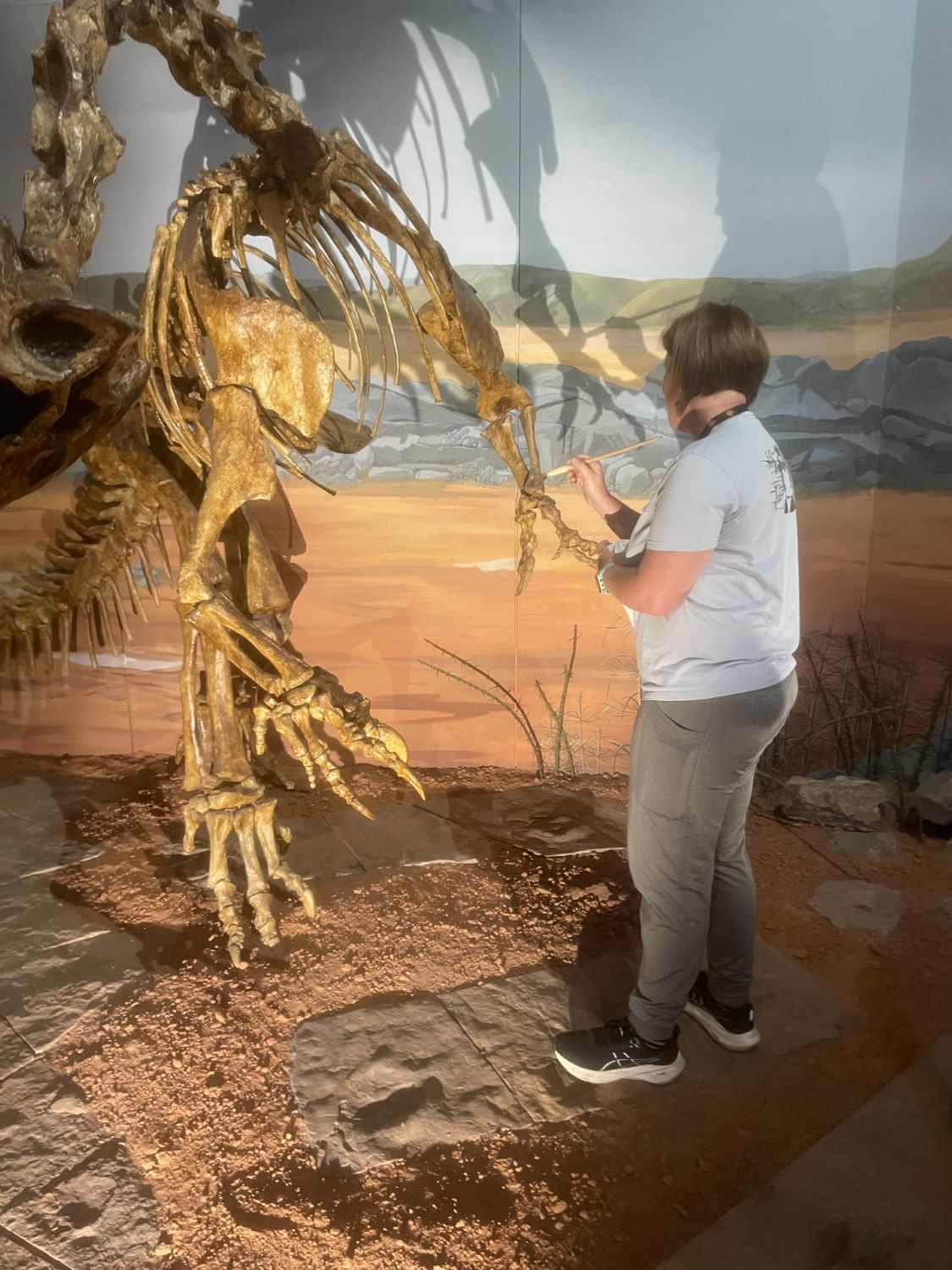
Performing a detailed deep clean as part of the ongoing maintenance to preserve the delicate specimens on display
Some elements of the dioramas, like the imitation oak tree foliage, are designed and positioned in such a way that it is impossible to clean both thoroughly and safely. Taxidermy specimens mounted at a high level are prone to insect pest attack as accessing them is extremely time and labour intensive, so regular checking and cleaning are not possible. A plea, therefore, to anyone designing a new diorama - please consider the practical cleaning, maintenance and access requirements of your display before building it!
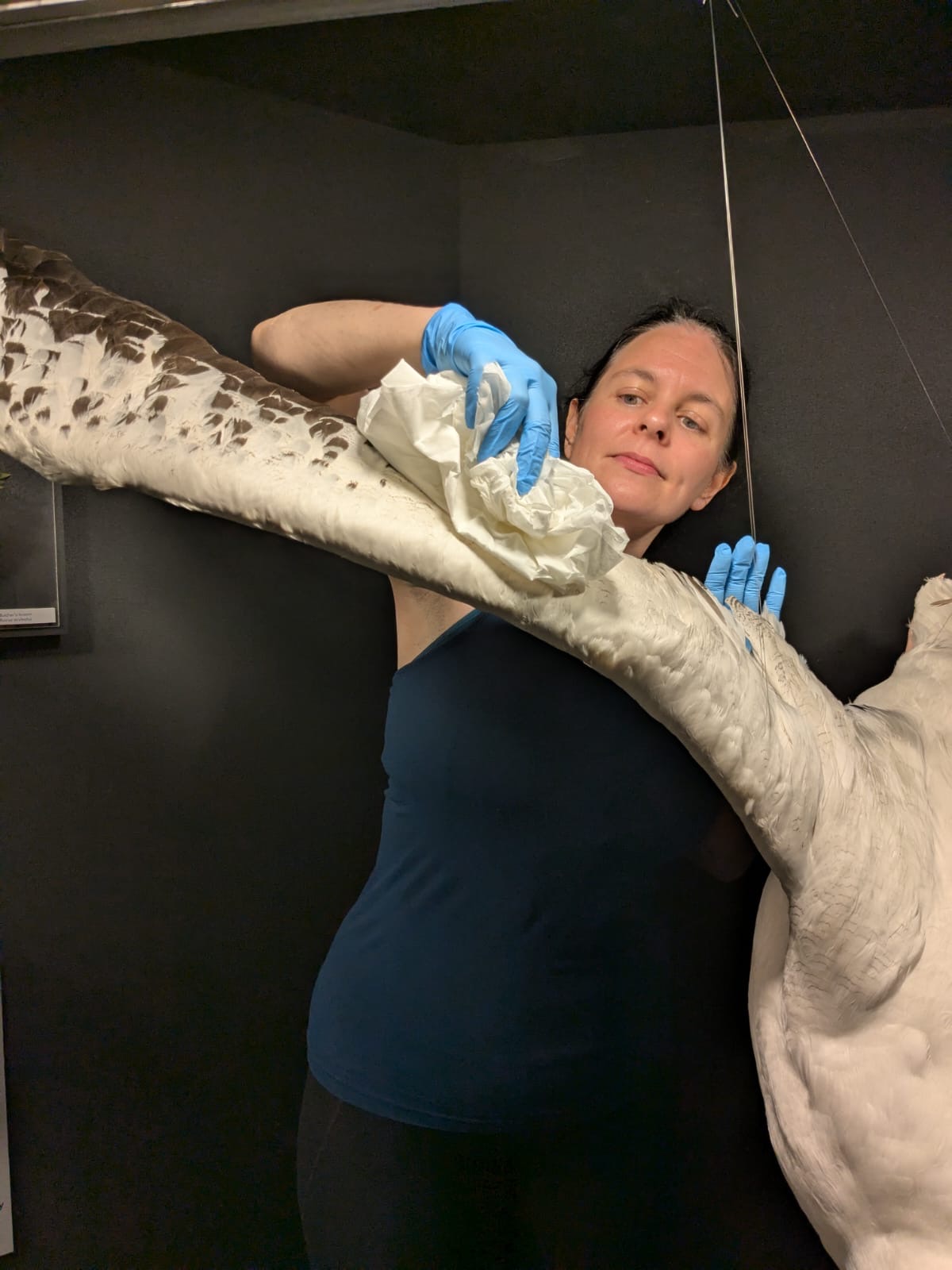
Cleaning a taxidermy specimen, a challenging task due to the restricted space and vulnerability to pest damage
Environmental Monitoring and Control
The different collection stores bring a variety of environmental considerations. I spend a lot of nervous energy worrying about pyrite decay in the Mineral and Palaeontology stores, where the HVAC system likes to mock me by routinely failing to maintain the tighter humidity targets for these spaces. The most vulnerable objects are in microclimates (sealed in Escal with silica gel) but larger specimens are still at risk, so I regularly need to deploy portable dehumidifiers. I assisted the Vertebrates curator, alongside the wider natural sciences team, to move the fluid preserved Vertebrate collection from an historically unsuitable space to the designated Fluid store, where purpose-built racking had been installed. This space maintains a fairly stable environment year-round, so we are fortunate that mould growth and varying rates of fluid evaporation have not manifested to date. The vertebrate specimens were audited, assessed for treatment needs, and their jars cleaned, prior to being installed in their new home.
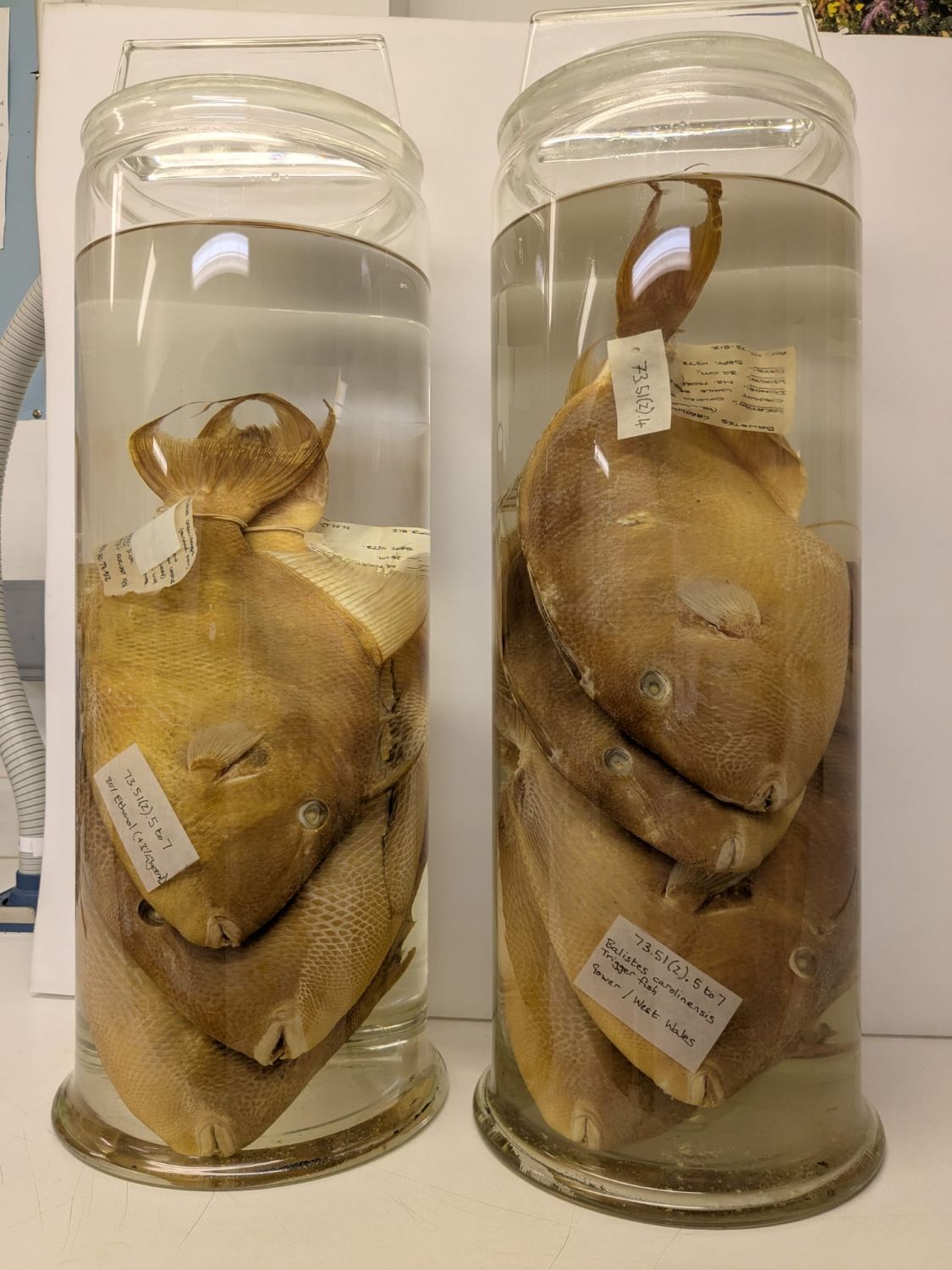
Specimens from the fluid-preserved vertebrate collection are now stored in a space designed to support stable environmental conditions
Safeguarding Stored Collections
For some of the stores, housekeeping is the biggest consideration due to the vulnerability of certain collection types to pest infestation. With the Vertebrates curator, I have been steadily working through the racking of taxidermy and mounted skeletal specimens to clean shelves and objects. This is one of our most popular stores for public and special tour groups, so it gets a much higher volume of footfall than other stores would expect.
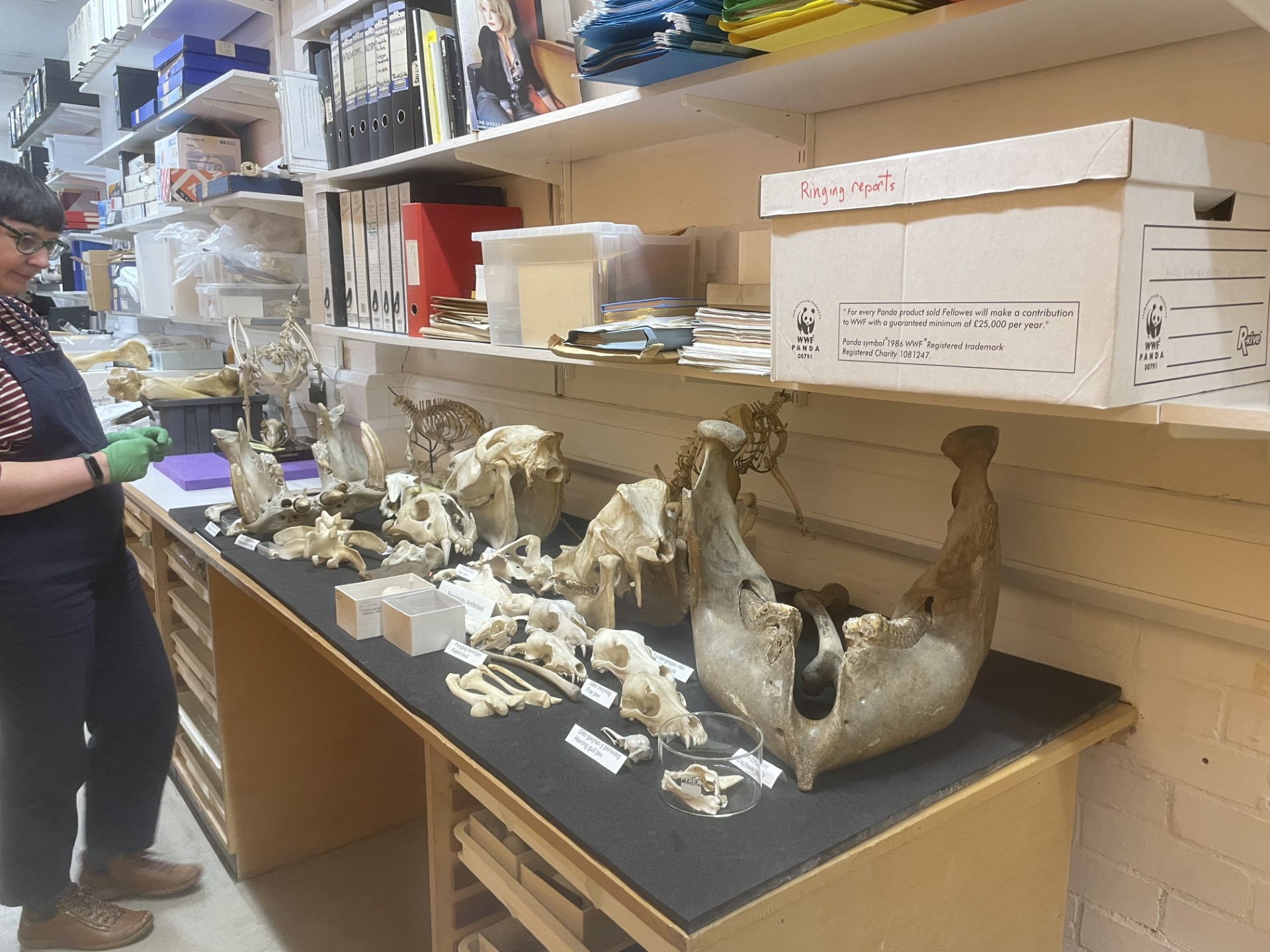
Working alongside the Vertebrates curator to care for skeletal specimens
The Entomology collection is also at higher risk of pest attack as well as corrosion and physical damage; this next year will see me working with our entomologists to digitise and audit drawers in preparation for installing new mobile racking for this collection.
To support ongoing care, training is an important part of my role. Over the last year I have delivered object handling, packing and marking training; box-making; and salvage workshops for the Natural Science curatorial team, as well as Art and Archaeology colleagues.
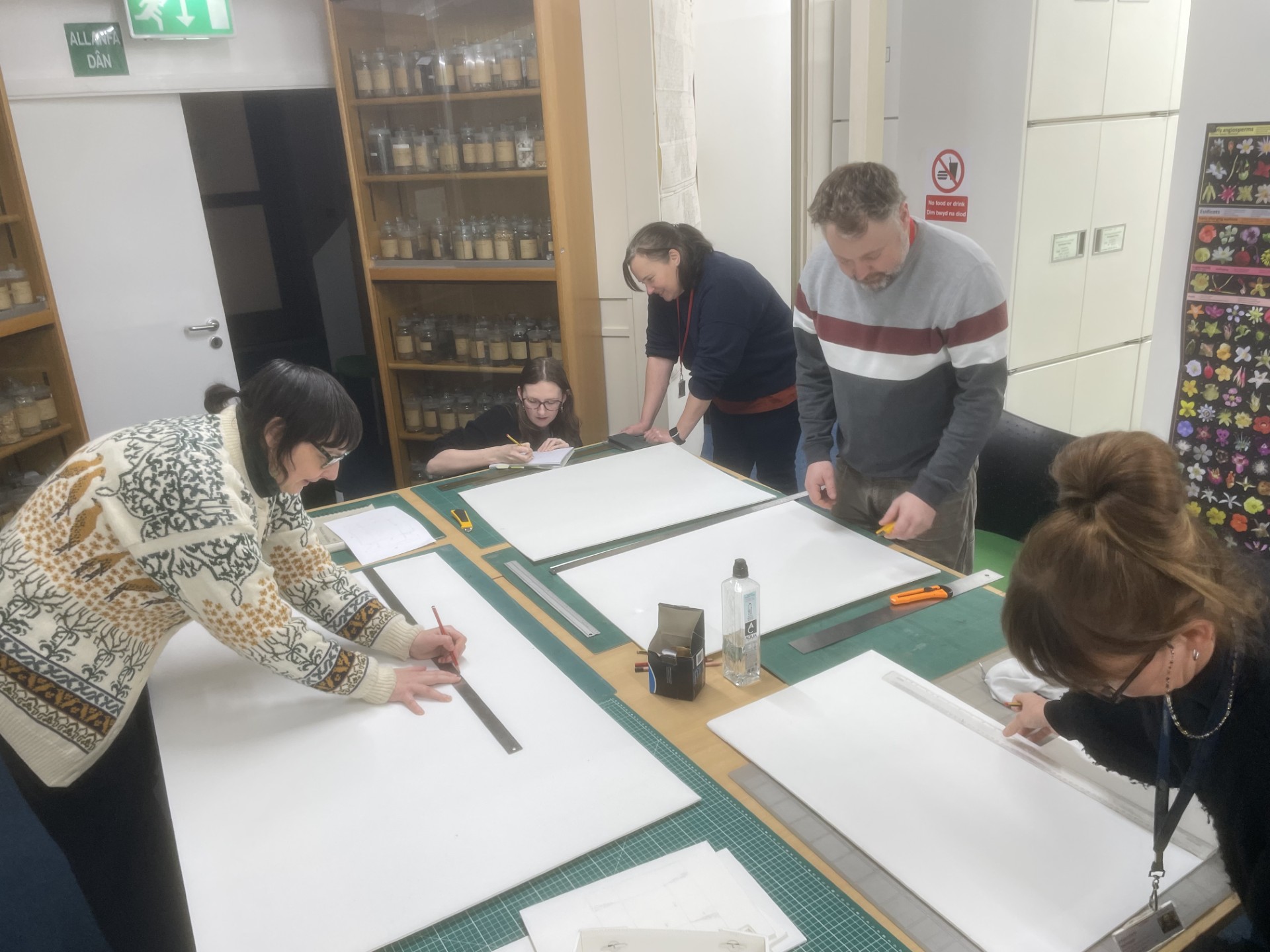
Team training focuses on object handling, packing, and box-making to ensure the care of valuable collections across departments
Reflecting on the First Eighteen Months
For me, my first year and a half at Amgueddfa Cymru has been a real two-way street of knowledge sharing. I have applied my collections care and preventive conservation experience gained from a variety of past workplaces to project planning and delivery and training programmes. I have, in turn, learned so much about the huge variety of conservation needs found across our Natural Science collections and derive so much joy from knowing that I am contributing to the preservation of our natural heritage which in turn enables scientific research that will help us better care for our environment in the future.
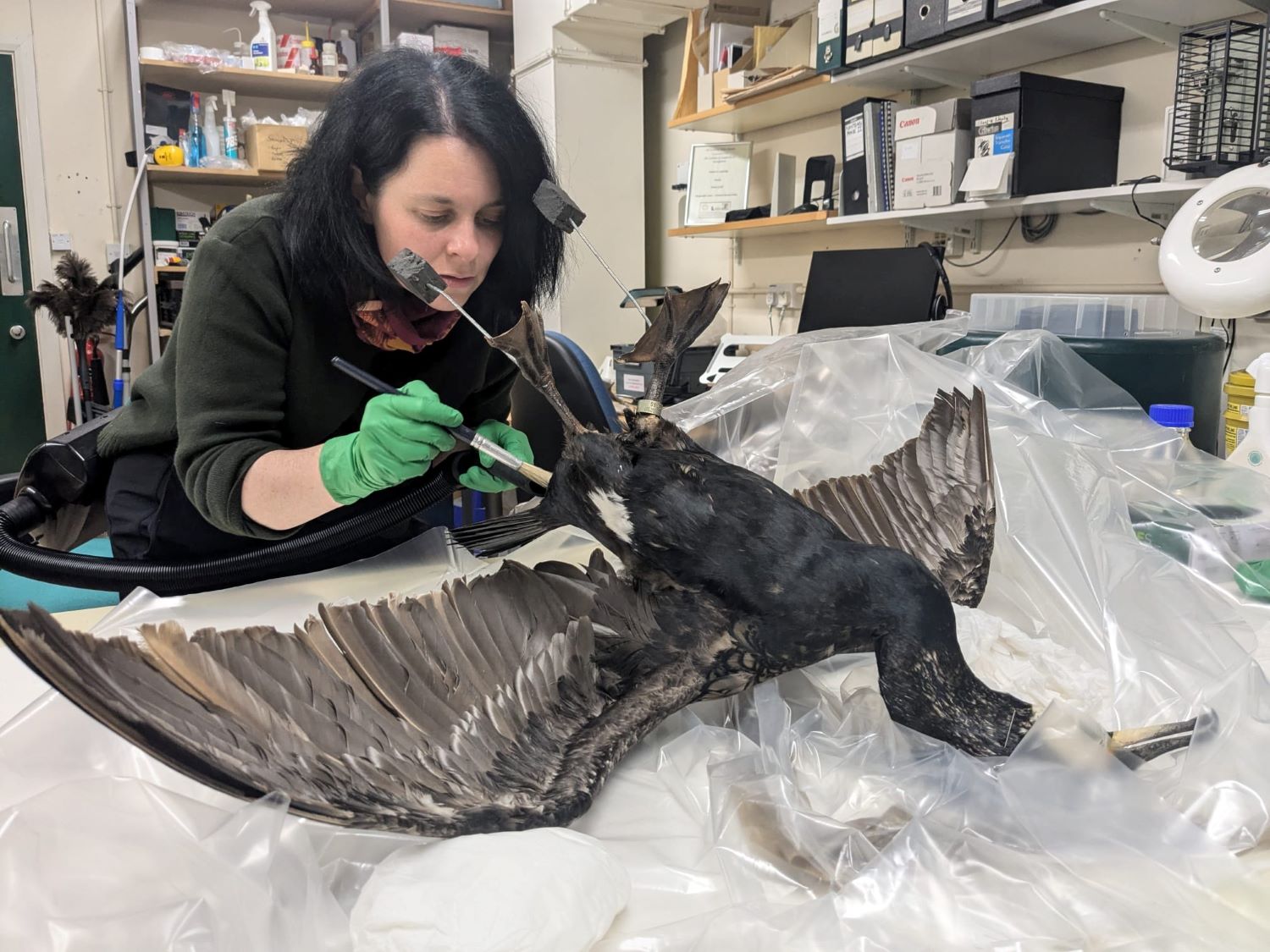
Gwen applying her expertise in preventive conservation to care for taxidermy specimens, embodying the ongoing exchange of knowledge and dedication that has shaped her first 18 months at Amgueddfa Cymru
